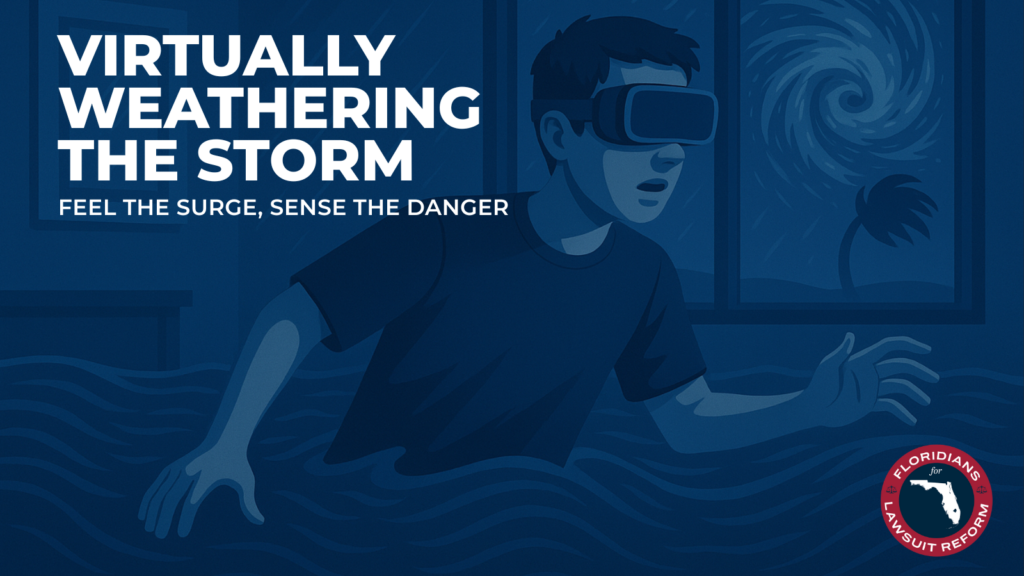
A new virtual reality simulation will use the idea that “seeing is believing” to show people why coastal evacuation orders are so important during storms. The simulation, called “Weather the Storm,” was funded by the NOAA’s Weather Program Office and created through a partnership between the University of Georgia, Clemson University, Georgia Sea Grant and South Carolina Sea Grant to improve storm surge preparation.
When a tropical storm or hurricane approaches the coast, the wind can push large amounts of water onto land as storm surge. Between 1963 and 2012, storm surge was responsible for nearly half (49%) of direct deaths from Atlantic tropical cyclones in the United States. Data indicates that from 2013 to 2022, storm surge accounted for 11% of direct deaths from tropical cyclones, a decrease from the 49% observed between 1963 and 2012. This suggests that public outreach and improved forecasting have contributed to a relative reduction in storm surge fatalities. Storm surge remains a dangerous and often misunderstood threat, however. In 2022, 41 people died as a result of storm surge from Hurricane Ian.
Grace Ahn, a researcher from the University of Georgia, and Matthew Browning, a researcher from Clemson University, developed the virtual reality (VR) simulation. Their process was informed by real-world images, data from interviews in coastal communities, and videos capturing people’s experiences with storm surge. The result is an immersive and realistic simulation that allows users to use VR headsets to “see” all around and experience a virtual home being taken over by wind-driven storm surge.
The research team collaborated with NOAA’s National Hurricane Center (NHC) throughout the project. The NHC helped guide the educational content in the simulation and identify opportunities for emergency managers and other partners to use it in their outreach. Experts from the Sea Grant programs also created a series of instructional materials, including slide decks, discussion questions, and activities for use in evacuation training sessions.
“This co-production took over 25 iterations, with hands-on field testing guiding the refinement of the simulation,” says Castle Williamsberg, a social scientist with NOAA’s Weather Program Office. “The entire team was committed to making it as realistic and scientifically accurate as possible, ensuring that people could truly understand the experience of storm surge in VR rather than facing it in the real world.”
The team also believes the simulation will bring hurricane safety to a younger audience, reaching new people with the popular new technology.
“With hurricanes and other natural disasters becoming increasingly destructive, we must use every tool available to protect our communities,” said Matthew Browning, associate professor at Clemson University and co-director of the Virtual Reality & Nature Lab. “‘Weather the Storm’ can be a powerful way for the general public to take preparations seriously, allowing people to truly experience the dangers of storm surge before it’s too late.”
“Weather the Storm” made its public debut at a large sporting event in September 2023, followed by a showcase at the Miami Disaster Expo in March 2024. The simulation was made available to the general public this month, and can be downloaded from the UGA Center for Advanced Computer-Human Ecosystems website. The application is designed to be used with a VR headset.
Advances in VR technology and lowering costs are enabling researchers to transform their knowledge into usable products that help more people grasp the weather hazards they may face.
Ahn says that, at a community fair, one young participant who was sitting down found the experience so realistic that he tried standing on his chair when the water started coming into the virtual home. That was a very different response compared to someone watching the experience on a monitor.
“We have known for decades that VR is a powerful communication tool that can change attitudes and behaviors, leaving a longer-lasting impact on behavior change compared to more traditional media. Now, we are on the cusp of VR use being commonplace, which allows us to consider it as a powerful addition to our risk communication toolset, to translate critical scientific information into visceral, experiential messages,” says Ahn.
Media contacts:
NOAA: Alison Gillespie, alison.gillespie@noaa.gov, (202) 713-6644
University of Georgia: Cole Sosebee, colesosebee@uga.edu
Clemson University: Shelly Gordon, addis2@clemson.edu
